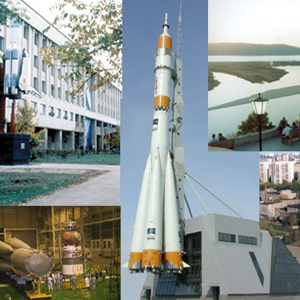
English > News
Students and young scientists from 10 countries will participate in SSAU Summer Space School
22.08.2014, 16:08
During two weeks the space school participants will study modern computer technology, for micro- and nanosatellites design, electronic systems engineering and space missions analysis. Also, students will attend lectures and perform laboratory and practical training in modern technologies of orientation, stabilization, navigation, development of energy supply systems, telemetry, on-board control systems applied to micro- and nanosatellites. The tasks will be performed on the example of the scientific and educational CubeSat class nanosatellite SamSatQB50, created by the researchers and students of Samara Aerospace University.
In addition to the leading teachers SSAU, two foreign professors will take part in the school work. A course of lectures of the Head of the Space Centre of the Portugal University of Beira, Dr. Anna Herman will be devoted to the rope systems. Dr. Pierre Roaches – the Head of the Liege Space Centre (Belgium) will read two lectures on the theme: “The space environment and its role in the design of satellites”. The classes will begin at 9.00 and end at 17.00.
Participation in the Summer Space School will not only give students new unique knowledge and experience, but also will give an opportunity to earn extra points on the European system of evaluation development of educational programs - ECTS. The two-week course proposed to the listeners is estimated at 3.5 credit units. For comparison, one-semester classes in a European university correspond to 30 ECTS-credits. To obtain a Bachelor's Degree it’s necessary to have in total from 180 to 240, and for Master’s Degree - 300 ECTS-credits.
In addition to lectures and workshops, the school students will be acquainted with SSAU laboratories and scientific experiments programs, as well as development plans of the Space and Missile Centre “Progress” as for creation and launch of new types of scientific spacecrafts “Foton” and “Bion”.
Moreover, the students of the Summer Space School will hold a round table on cooperation and development of joint educational programs in the field of space, and will take part in a video conference with the Headquarters of the World Association of Space Universities located in Kyoto University (Japan).
Additional and background information
International Summer Space School “Future Space Technologies and Experiments in Space” is held in Samara from 2003. It is organized by the Interuniversity Department of Space Research in Samara State Aerospace University named after S. P. Korolev.
Russian Academy of Cosmonautics named after K. E. Tsyolkovskiy (Volga Department) and State Scientific and Production Space and Missile Centre “Central Specialised Construction Bureau Progress” are actively involved in organizing and conducting of the School. The event is supported by the Russian Space Agency, the International Astronautical Federation, the Russian Foundation for Basic Research and Administration of Samara Region.
It is expected that participants of SSAU Summer Space School 2014 will be the students from:
• Lulea University of Technology (Sweden);
• La Sapienza University of Rome (Italy);
• University of Bologna (Italy);
• Technical University of Berlin (Germany);
• Julius Maximilian University of Würzburg (Germany);
• Thomas More University (Belgium);
• Royal College of Pembroke (Great Britain);
• Pirua University of Lima (Peru);
• Industrial University of Santander (Colombia);
• Belarusian State University;
• Eurasian National University named after L. N. Gumilev (Kazakhstan);
• Samara Aerospace University (SAU).
As well as the young scientists from:
• Peruvian Space Agency CONIDA;
• Belarusian design and engineering enterprise of optoelectronic instrument-making– JSC “Peleng”.
Tags: international summer space school nanosatellite future space technologies experiments in space









